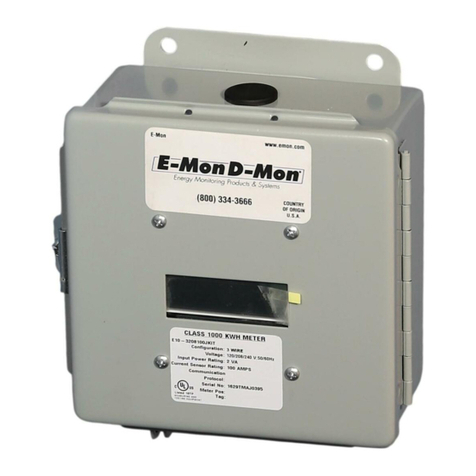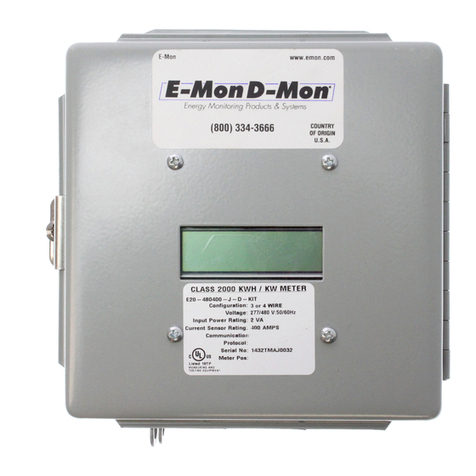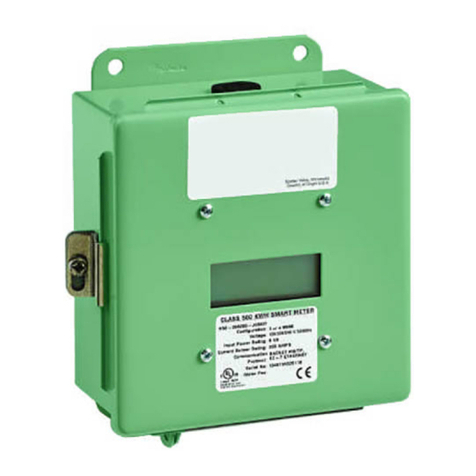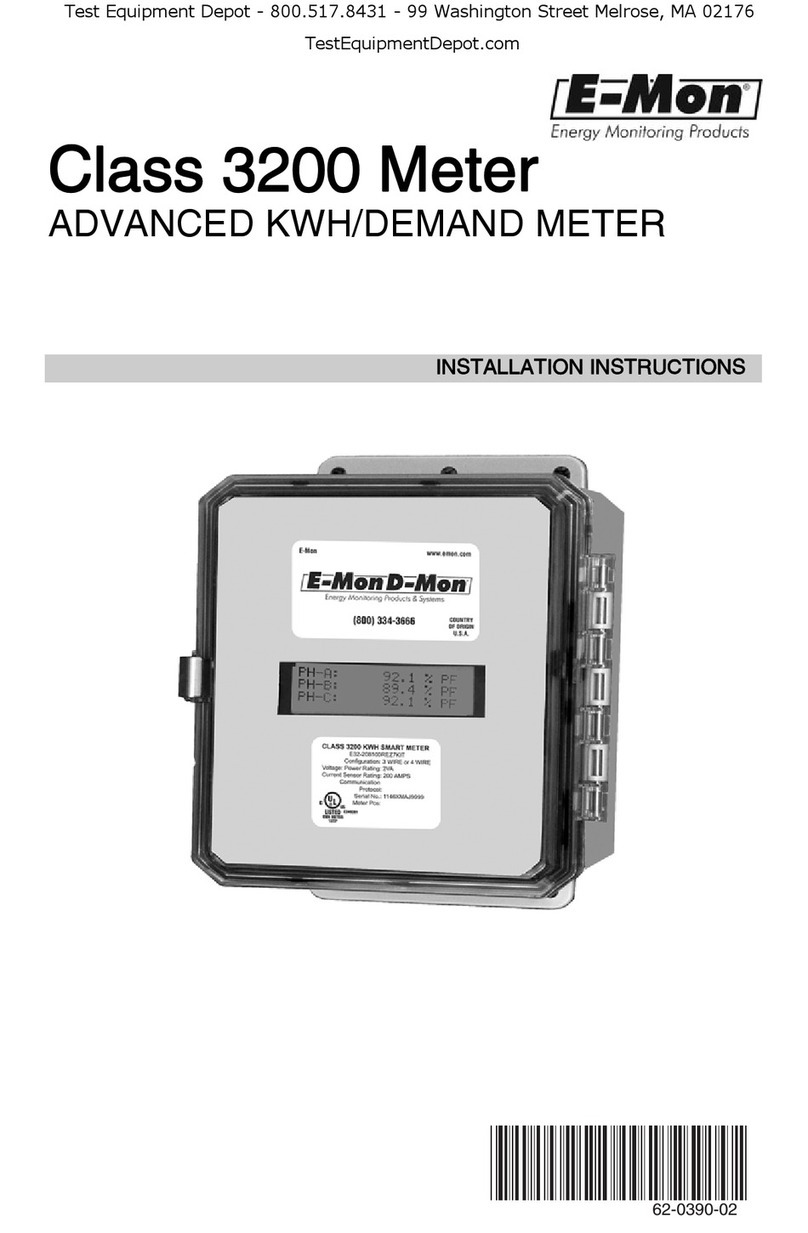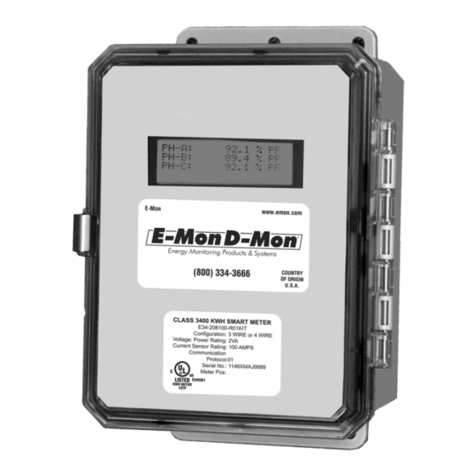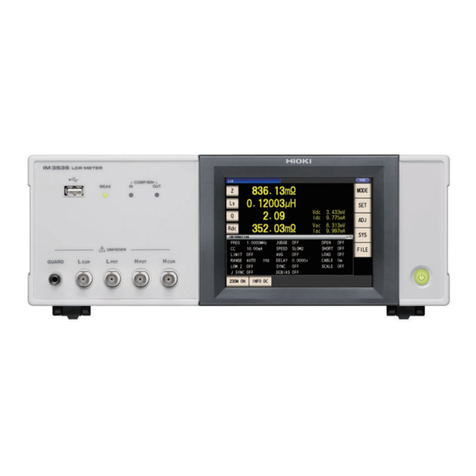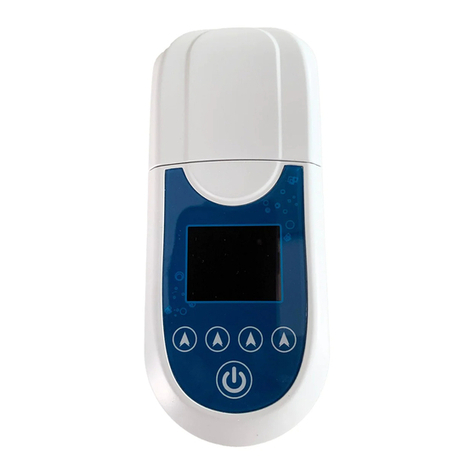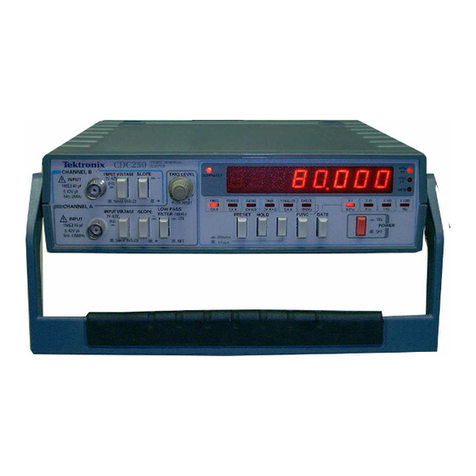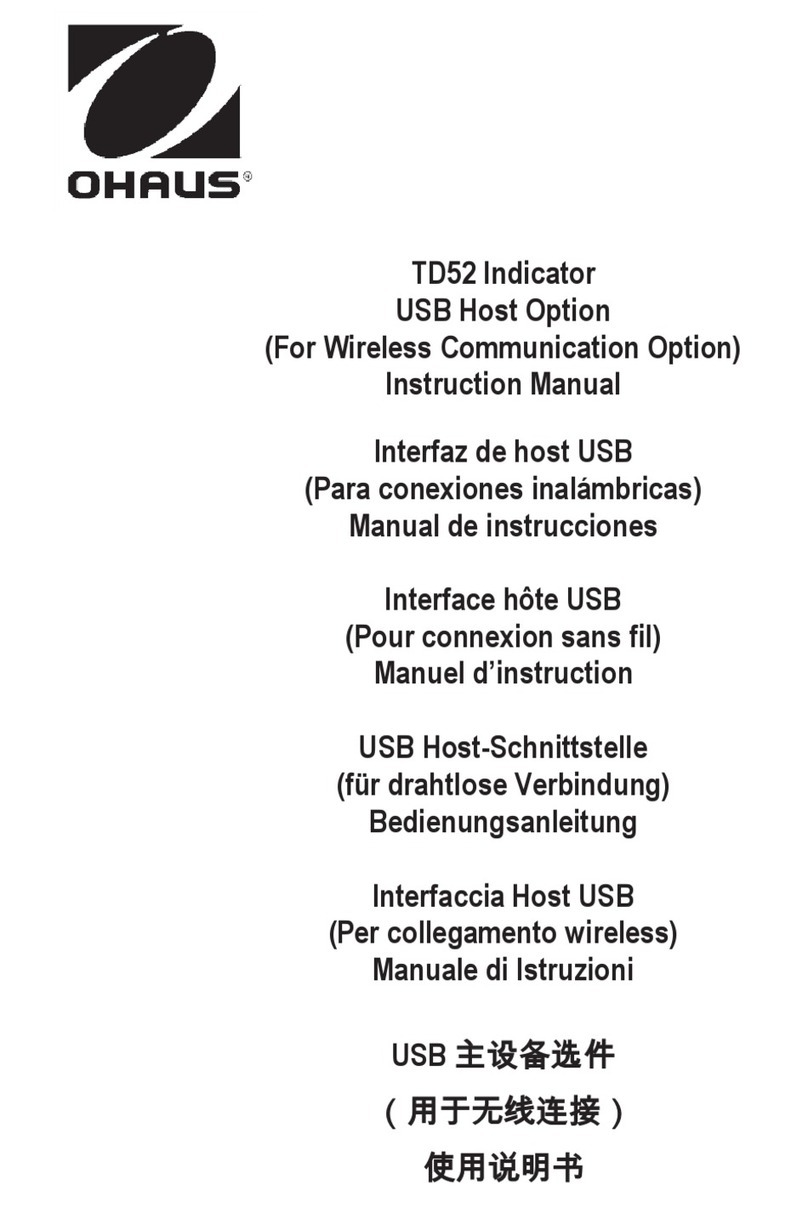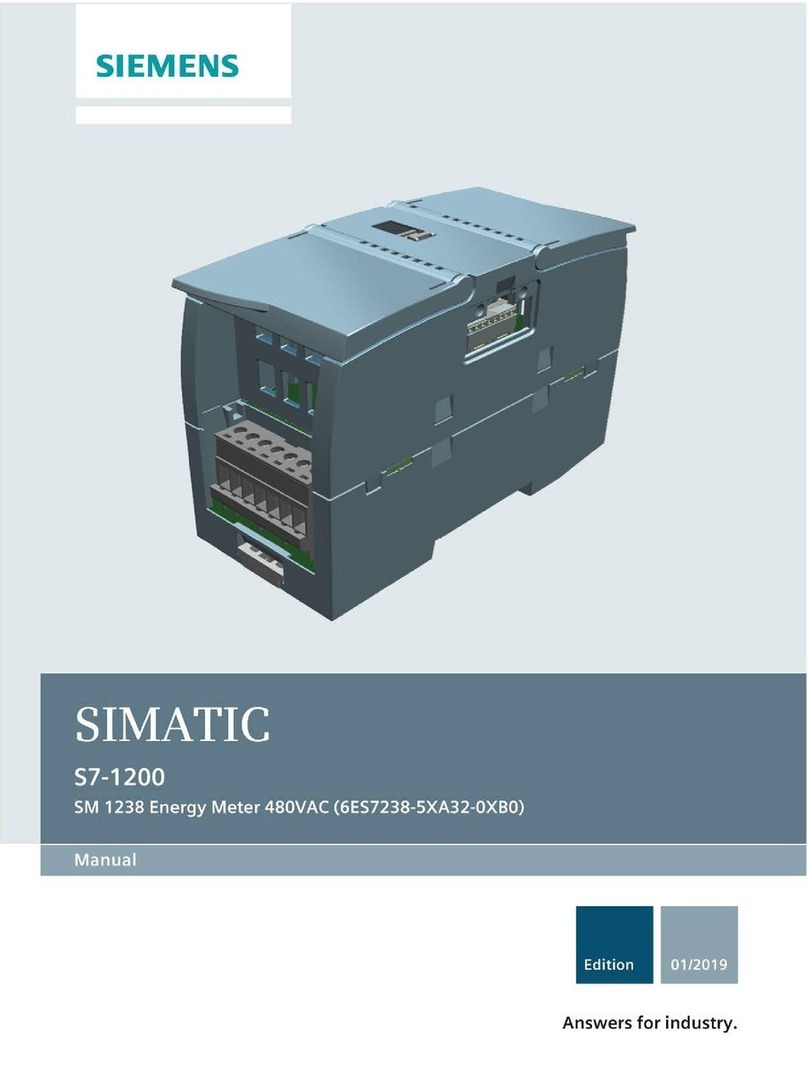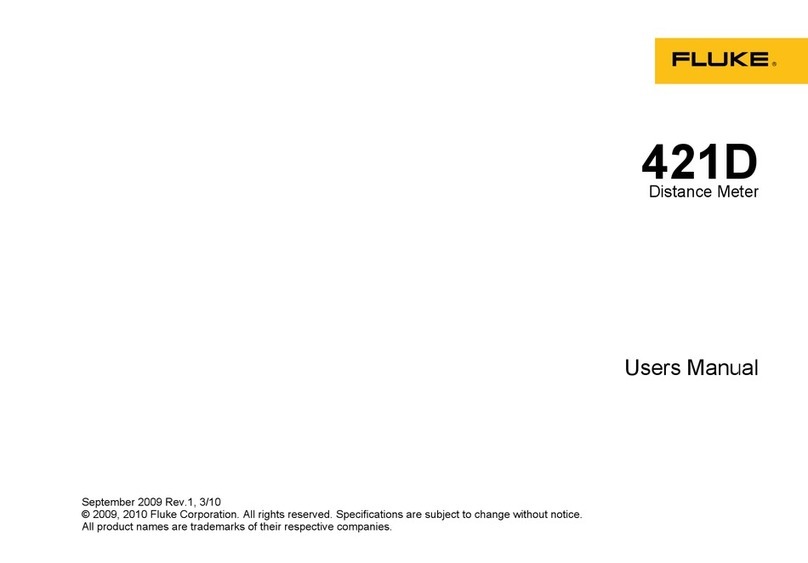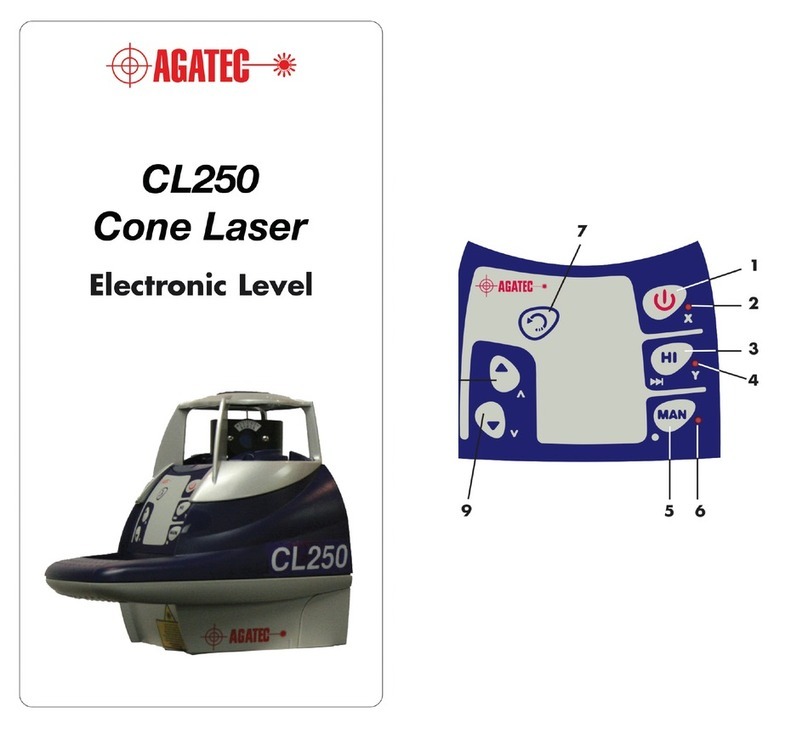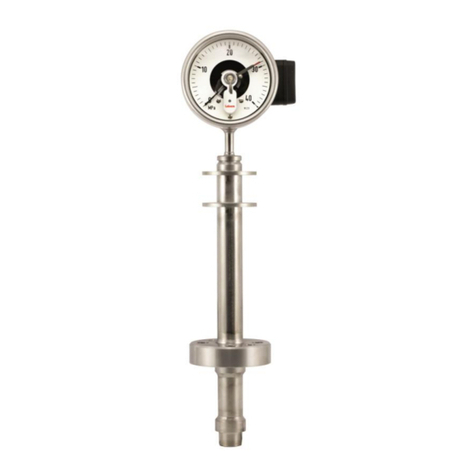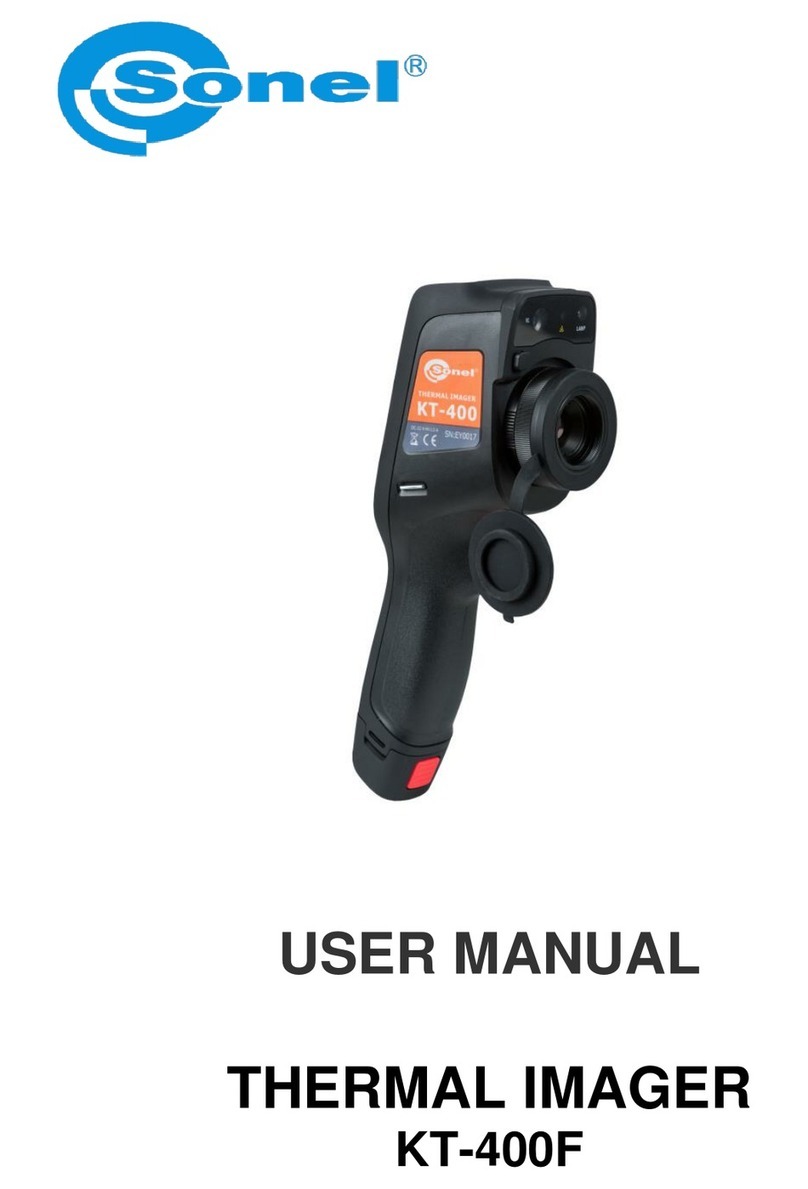E-Mon Din-Mon D5 User manual

62-0442-05
INSTALLATION INSTRUCTIONS
Din-Mon™Smart Meter
Advanced kWh/Demand Meters with Communication
E-Mon
1985 Douglas Drive North
Golden Valley, MN 55422
(800) 334-3666
www.emon.com

DIN-MON™ SMART METER
62-0442—05 2
Dear Valued Customer,
We are pleased that you chose to buy one of our products and want you to be just as
pleased with owning it. Before installing your new E-Mon product, please read the
information on the following pages carefully.
We believe that you will find the E-Mon D-Mon meters easy to install and to use for
monitoring and evaluating your electrical usage.
To be sure that you are 100% satisfied with your products, we provide toll-free
technical and sales support Monday through Friday, 8:00 am to 7:30 pm, EST:
If you have questions, we can handle them quickly and effectively with a telephone call.
Please let us try to help you BEFORE you remove your meter. And to help us help you,
we ask that you have all relevant information on hand when you call (model or part
numbers, nature of difficulty, etc.)
Be sure to forward this manual to the owner after installation is complete, so that they
may use it as a reference guide when reading the E-Mon D-Mon meter.
Thank you.
TABLE OF CONTENTS
Safety Label Definitions and Information.................................... 4
Precautionary and Safety Information ........................................ 5
Section 1.0 Introduction................................................................................. 6
Section 2.0 Meter Technical Specifications ................................................... 9
Section 2.1 Ordering Information.............................................................. 9
Section 2.2 Technical Specifications......................................................... 10
Section 3.0 Meter Overview .......................................................................... 12
Section 3.1 Main Power Input Voltage and Current Sensors .................... 12
Section 3.2 Communication Ports and Output Contact Terminals............ 13
Section 3.3 Terminal Covers..................................................................... 14
Section 4.0 Meter Installation ........................................................................ 15
Section 4.1 Mounting the Meter................................................................ 15
Section 4.2 Wall Mounting ........................................................................ 15
Section 4.3 DIN-Rail Mounting ................................................................. 16
Section 4.4 Wiring the Voltage.................................................................. 17
Section 4.4.1 Phasing of Line Voltage.................................................... 19
Section 4.5 Wiring Current Sensor Inputs ................................................ 20
Section 4.5.1 Installing Split-Core Current Sensor Assembly ................ 21
Section 4.5.2 Installing Solid-Core Current Sensor................................ 22

DIN-MON™ SMART METER
3 62-0442—05
Section 4.5.3 Current Sensor Wiring...................................................... 23
Section 4.5.4 Multiple-Load Monitoring .................................................. 24
Section 4.6 Main Power and Current Sensor Wiring Diagram.................. 25
Section 4.6.1 4-Wire Wye, 3-Element Connection Diagram................... 25
Section 4.6.2 3-Wire Delta, 3-Element Connection Diagram ................. 25
Section 4.6.3 3-Wire, 2-Element Connection Diagram........................... 25
Section 4.6.4 2-Wire, 1-Element Connection Diagram........................... 26
Section 4.7 Installation Diagnostics.......................................................... 27
Section 4.7.1 Line Voltage Diagnostics .................................................. 27
Section 4.7.2 Current Sensor Diagnostics ............................................. 27
Section 4.8 Wiring the Communications................................................... 29
Section 4.8.1 RS-485 Network and Wiring............................................. 29
Section 4.8.2 Meter RS-485 Wiring........................................................ 30
Section 4.8.3 USB Key Wiring................................................................ 30
Section 4.8.4 Ethernet Wiring (Optional on D5 Models Only) ................ 31
Section 4.8.5 LonWorks Wiring (Optional on D5 Models Only).............. 32
Section 5.0 Communication Protocols........................................................... 34
Section 5.1.1 Modbus RTU .................................................................... 34
Section 5.1.2 BACnet MS/TP ................................................................. 34
Section 5.1.3 Baud Rate and Settings on RS-485 ................................. 34
Section 5.1.4 Modbus TCP/IP ................................................................ 35
Section 5.1.5 BACnet IP......................................................................... 35
Section 5.1.6 LonWorks TP/FT-10.......................................................... 35
Section 5.1.7 EZ7 on RS-485 and Ethernet ........................................... 35
Section 6.0 External Interface ....................................................................... 36
Section 6.1 Pulse Output.......................................................................... 36
Section 6.2 Pulse Type and Value ............................................................ 37
Section 7.0 Setting Up the Meter Using the Push Buttons............................ 38
Section 7.1 Navigating Menus .................................................................. 38
Section 7.1.1 Setup Menu Screens........................................................ 39
Section 7.2 Configurable Settings from the Display Menu........................ 41
Section 7.2.1 Setting Date and Time...................................................... 42
Section 7.2.2 Setting Device ID (Modbus).............................................. 42
Section 7.2.3 Setting Device ID (BACnet) .............................................. 43
Section 7.2.4 Setting Ethernet IP Address ............................................. 43
Section 7.2.5 Setting Pulse Value .......................................................... 44

DIN-MON™ SMART METER
62-0442—05 4
SAFETY LABEL DEFINITIONS AND
INFORMATION
The Din-Mon™ meter may contain one or more of the following labels. Operator(s)
should familiarize themselves with the meaning of each label to minimize risk.
This symbol indicates double or reinforced insulation.
The presence of this label is a cautionary indicator identifying a danger risk.
The manual should be consulted prior to proceeding.
The presence of this label indicates that an electrical shock hazard exists in
the location or area where the label is placed. Prior to proceeding, the MAINS
power must be disconnected and the manual consulted for safety
information.
Section 7.2.6 Setting Communication Protocol ...................................... 44
Section 7.2.7 Setting Communication Baud Rate .................................. 45
Section 7.2.8 Setting Phase Loss or VAR-Hour Pulse ........................... 45
Section 7.2.9 Setting CT Selection......................................................... 46
Section 7.2.10 Setting Access Protection ................................................ 46
Section 7.2.11 Changing Password.......................................................... 47
Section 7.2.12 Setting BACnet MS/TP..................................................... 47
Section 7.2.13 Resetting Meter kWh/kW.................................................. 48
Section 8.0 Normal Operating Modes ........................................................... 49
Section 8.1 Startup Screens..................................................................... 49
Section 8.2 Reading the Meter Display .................................................... 50
Section 8.3 Display Hold Feature ............................................................. 51
Section 9.0 Preventative/Scheduled Maintenance ........................................ 52
Section 10.0 Lithium Battery Replacement ..................................................... 53
Section 11.0 Frequently Asked Questions....................................................... 55
Section 12.0 Meter Limited Warranty .............................................................. 57
Appendix A Modbus Point Map...................................................................... 58
Appendix B BACnet Objects .......................................................................... 60
Appendix C LonWorks Protocol Data Points.................................................. 63
Appendix D Troubleshooting .......................................................................... 70

DIN-MON™ SMART METER
5 62-0442—05
FCC NOTICE
This equipment has been tested and found to comply with the limits for a Class B
digital device, pursuant to part 15 of the FCC Rules. These limits are designed to
provide reasonable protection against harmful interference in a residential installation.
This equipment generates, uses and can radiate radio frequency energy and, if not
installed there is no guarantee that interference will not occur in a particular
installation. If this equipment does cause harmful interference to radio or television
reception, which can be determined by turning the equipment off and on, the user is
encouraged to try to correct the interference by one or more of the following measures:
– Reorient or relocate the receiving antenna.
– Increase the separation between the equipment and receiver
– Connect the equipment into an outlet on a circuit different from that to which the
receiver is connected.
– Consult the dealer or an experienced radio/TV technician for help.
STANDARDS COMPLIANCE
BACnet MS/TP and IP protocol is BTL listed.
LonWorks TP/FT-10 protocol is LonMark®certified.
PRECAUTIONARY AND SAFETY
INFORMATION
CAUTION
Internal circuit card components are extremely sensitive to electrostatic
discharge. Be careful not to touch internal circuitry prior to discharging
any static buildup on your person. To discharge yourself, touch a
grounded metal object such as conduit or an earth-grounded metal
enclosure.
WARNING
High voltages are present on voltage input connections screw terminals.
Risk of serious injury and/or electrical shock exists. Prior to performing
any wiring operations, review all contents of the user manual and de-
energize the MAINS power switch. Only qualified personnel should
perform installation wiring. Installation wiring must comply with all local
and national electrical codes.

DIN-MON™ SMART METER
62-0442—05 6
1.0 INTRODUCTION
The Din-Mon™ meter is used to monitor electric power usage of individual loads after
the utility meter and store kW and kVAR data for automatic meter reading.
The model D2 kWh meter has an RS-485 communication for remote reading.
The model D5 Advanced kWh meter has dual protocols with Ethernet or LonWorks
communications in addition to RS-485.
Refer to the Technical Specification section for details.
Fig. 1. Din-MonTM Meter (top angle view with covers).
Installation must only be performed by qualified personnel and in accordance with
these instructions and all applicable local and national electrical codes. E-Mon and its
representatives assume no responsibility for damages or injury resulting from the
improper installation of this meter.
Fig. 2. Meter Name Plate (side view with cover removed).

DIN-MON™ SMART METER
7 62-0442—05
Fig. 3. Model D2 Meter
(top view with cover removed).
Verify the input voltage rating, amperage, sensor type and configuration on the meter
name plate (located on the left side of the meter) to ensure that it is suitable for the
intended electrical service. For example, the meter labeled for 120/208V service
MUST NOT be installed on service feeds of 277/480V and vice versa. Verify that the
meter’s current sensors are sized suitably for the load to be monitored.
Fig. 4. Model D5 Meter with Ethernet
(top view with cover removed).
Fig. 5. Model D5 Meter with LonWorks
(top view with cover removed).

DIN-MON™ SMART METER
62-0442—05 8
NOTE: If any trouble arises during installation or functional verification opera-
tions, do not immediately remove the unit. Before removing the unit,
contact E-Mon’s technical support department at (800) 334-3666. E-
Mon’s technical department will assist you in detailed troubleshooting
of the Din-Mon™ meter installation.
CAUTION
Internal circuit card components are extremely sensitive to electrostatic
discharge. Prior to handling or touching internal circuitry, discharge any
static buildup on your person. To discharge yourself, touch a grounded
metal object such as conduit or an earth grounded metal enclosure.
WARNING
Use of this instrument, Din-MonTM kWh Meter, in a manner inconsistent
with this manual or not specified by the manufacturer in writing, can
cause permanent damage to the unit and/or serious injury to the
operator. The protection and safety features provided by this equipment
may become impaired or otherwise compromised.

DIN-MON™ SMART METER
9 62-0442—05
2.0 METER TECHNICAL SPECIFICATIONS
2.1 Ordering Information
Brand
Class
Voltage
Current Rating
(Amps)
Enclosure
Communication
Protocol
Current Sensor
Type
Phase
Current Sensor
Input
Package Type
Example E D5 480 100 S 03 SPL 3 V3 KIT3
E-D5-480100-S03SPL3-V3KIT3
Brand E=E-Mon D-Mon
Class D2 = Din-Mon™ kWh Meter
D5 = Din-Mon™ Advanced kWh Meter
Voltage (Input) 120=120V (L-N)
208=120/208V, 127/220V (L-L)
480=277/480V (L-L)
600=347/600V (L-N)
400=220/380V, 230/400V, or 240/415V (L-N)
Current Rating
(Amps)
100-, 200-, 400-, 800-
Enclosure S=DIN Rail / Flat mount
Communication
Protocol
RTU=MODBUS RTU (only D2)
BAC=BACnet MS/TP (only D2)
EZ=EZ7 (only D2)
01=EZ7, EZ7 Ethernet
02=Modbus RTU, EZ7 Ethernet
03=BACnet MS/TP, EZ7 Ethernet
04=EZ7,Modbus TCP/IP
05=EZ7, BACnet IP
06=Modbus RTU, Modbus TCP/IP
12=EZ7/ LonWorks (TP/FT-10)
Current Sensor
Type
SPL=Split Core Sensors(100, 200, 400, 800) Amps
SCS=Solid Core Sensor (100, 200) Amps
Phase 1=Single Phase, 2=Two Phases, 3=Three Phases
Current Sensor
Input V3=0.333V
C1=100mA
Package Type Blank=No Current Sensor
KIT1=Include 1 Current Sensor,
KIT2=Include 2 Current Sensors,
KIT3=Include 3 Current Sensors

DIN-MON™ SMART METER
62-0442—05 10
2.2 Technical Specifications
Input Voltage
Configuration
2-wire single phase, 3-wire single phase, 3-wire (Delta),
or 4-wire (WYE)
Mains Voltage Input Up To 600 VAC RMS Available
Meter Input Power 6 VA Maximum
Current Sensor
Rating
Up To 800 Amps RMS AC
Power Factor 0.5 Leading Or Lagging
Line Frequency 50-60 Hz
Meter Accuracy ANSI C12.20
Voltage Operating
Range
+/-10% Of Rated Voltage
Temperature Range -30 C To +60 C
Relative Humidity
Range
0-95% Non-condensing
Altitude 2000 Meters
Voltage Overload +25% Continuously: +100% For 20 Cycles
Pollution Degree Degree 2 In Accordance With IEC 664
Installation
(Overvoltage)
Category
Category III
Measurement
Category
Category III
Enclosure Material PPO/PS (plastic)
Display 4-Line LCD with backlight
Standards EN 61326-1:2006 IEC 61010-1:2012, 3rd Edition
Voltage Ranges 120 VAC (2-wire single phase)
277 VAC (2-wire single phase) [optional]
120/208-240 VAC (3-wire single phase)
120/208 VAC (4-wire WYE)
127/220 VAC (4-wire WYE)
240 VAC (3-wire Delta)
277/480 VAC (4-wire WYE or 3-wire Delta)
347/600 VAC (4-wire WYE only)
220/380 VAC (4-wire WYE only)
230/400 VAC (4-wire WYE only)
240/415 VAC (4-wire WYE only)
Amperage Ranges 100, 200, 400, 800 Amp
Recommended
In-line Fuse
Manufacturer Littelfuse
Mfg. Part No OKLK.500T
Rating: 500mA, 600VAC Cartridge
Fuse

DIN-MON™ SMART METER
11 62-0442—05
Battery Cell Description Non-rechargeable Cell Used
For Memory Retention and
RTC
Manufacturer Panasonic
Manufacturer Part No CR2032
Working Voltage 3 VDC
Current Capacity 225 mAHr
Electrolyte Manganese Dioxide Lithium
RS-485 Serial
Communications
Cable UL-listed stranded conductors
22-26 AWG, Belden 3106A (3-
wire)
Input / Output Voltage Grounded-isolated +/-5.4 VDC
Cable Connector Screw terminal termination
Circuit Input Isolation 5.3 kVAC
Max Cable Distance 4,000 feet
Max Network Nodes 64 cabling nodes
Max Baud Rate Up to 76.8 kpbs
Ethernet
Communications
Cable UL-Listed CAT-5e cable,
8-conductor, stranded 24 AWG
Cable Connector RJ-45
Protocol 10/100-Base-T
Cable Distance 450 feet
LonWorks
Communications
Cable Stranded Twisted 24 Awg.
TIA 568A Category 5
Cable Connector Screw Terminal Terminations
Protocol TP/FT-10
Twisted Pair/Free Topology
Max Cable Distance Single Terminated:
820 feet (device to device)
1476 feet (total wire length)
Doubly Terminated:
3280 feet (max bus length)
10 feet (max stub length)
Max Network Nodes 64 Devices/Nodes on single
network
Max Baud Rate 78 kbps bit rate
Outputs 1 and 2 Contact Closure N.O. Dry
Contact Rating (max.) 100mA, 60V AC or VDC
Mating Connector Screw terminal plug (2-wire)
Isolation Voltage 2.5 kV

DIN-MON™ SMART METER
62-0442—05 12
3.0 METER OVERVIEW
The unit is comprised of 3 main components, the Main Power Connections, the Sensor
Input Terminals and the Communication Ports and Terminals.
Fig. 6. Communication Ports, Main Power Input and
Current Sensor Input Terminals.
3.1 Main Power Input Voltage and Current Sensors
The Main Power Input Terminals are the 4-screw terminals located on the lower left of
the unit. The main power input wires connect to these terminals. The terminals are
covered with a protective shield for safety purposes. The meter draws a maximum of 6
VA.
The Current Sensor Input Terminals are the 6-screw terminal plugs located on the
lower right of the unit. The current sensor input wires connect to these terminal plugs,
and each 2-screw terminal plug corresponds to an input voltage phase; care must be
exercised to ensure that each current sensor is connected to the correct terminal plug.
M34553
COMMUNICATION
PORTS AND TERMINALS
MAIN POWER
INPUT TERMINALS
SENSOR INPUT
TERMINALS

DIN-MON™ SMART METER
13 62-0442—05
3.2 Communication Ports and Output Contact
Terminals
The Communication Ports and Output Contact Terminals are located along the top
edge of the meter.
Fig. 7. Communication Ports and Terminals.
The VAR-Hour/Phase Loss and Watt-Hour pulse output terminals provide a scaled
VAR-Hour/Watt-Hour pulse that is dependent on the meter amperage rating. Please
see Section “Pulse Type and Value” for pulse values. Optionally the VAR-Hour
terminals can be set to indicate a “Loss of Phase” alarm output.
The VAR-Hour/Phase Loss and Watt-Hour pulse output terminals are solid-state
switches. Switching is limited to 100mA (0.1 Amp) and voltage should not exceed 60
Volts AC or DC.
One 3-terminal screw terminal plug is provided for RS-485 communications.
Din-Mon™ D5 meters are available with a RJ-45 jack for 10/100-Base-T Ethernet for
communicating via Modbus TCP/IP, BACnet IP, or EZ7 over Ethernet. Ethernet is not
available on the Din-Mon™ D2 meters: if the meter was ordered with LonWorks, a z-
position screw terminal plug for LonWorks will replace the RJ-45 jack (Ethernet).
M34556
OPTIONAL
LONWORKS
OR ETHERNET
RJ-45
JACK (D5)
BATTERY
WATT-HOUR
PULSE OUTPUT
TERMINALS
RS-485
NETWORK
INPUT
TERMINALS
VAR-HOUR
OR PHASE
LOSS OUTPUT
TERMINALS

DIN-MON™ SMART METER
62-0442—05 14
LonWorks (optionally available on Din-Mon™ D5 meters) is a protocol used to
communicate via TP/FT-10 (Twisted Pair / Free Topology) network. It allows the end
user to read meter point data via SNVT’s (Standard Network Variable Types).
The Din-Mon™ D5 meter uses the LonWorks Protocol to provide remote monitoring of
metered data points for use in e.g. BAS (Building Automation Systems), and AMR
(Automatic Meter Reading Systems).
Fig. 8. Model D5 Advanced kWh Meter with LonWorks Input Terminals.
3.3 Terminal Covers
The Din-Mon™ meter has 2 terminal covers – one for the voltage/current terminal and
the other for the pulse/phase loss outputs and communications. Each terminal cover
has breakable teeth to let the wires feed through; break the teeth as needed for your
applications. Once wiring is completed, replace the terminal cover and secure in place.
Fig. 9. Terminal Cover.
LONWORKS
CONNECTION
M35086
SERVICE PIN

DIN-MON™ SMART METER
15 62-0442—05
4.0 METER INSTALLATION
4.1 Mounting the Meter
The Din-MonTM meter is designed to be mounted by using the four mounting holes on
the meter or attaching it to a DIN rail that has previously been installed. Refer to the
wall mounting instructions below or to the DIN Rail mounting instructions on the
following page.
Installation must only be performed by qualified personnel and in accordance with
these instructions and all applicable local and national electrical codes. E-Mon and its
representatives assume no responsibility for damages or injury resulting from the
improper installation of this meter.
The Din-MonTM meters are designed to be installed in protective enclosures. The
enclosure must be of the proper type to contain fire, should this occur. The
environmental conditions of the application must be considered in choosing the
appropriate enclosure type. Use appropriately sized mounting hardware to fasten the
meter enclosure to the selected mounting surface.
4.2 Wall Mounting
The meter mounts using four screws inserted through the corners of the base plate.
Fasten securely with four No. 6 or No. 8 machine or sheet metal screws.
Fig. 10. Wall Mount and Meter Dimensions (front and side view).
M35090
4-5/16 (110)
5-1/2
(140)
4 (102)
5-3/16
(132)
1-49/64
(45)
2-9/32 (58)
1-57/64 (48)

DIN-MON™ SMART METER
62-0442—05 16
4.3 DIN-Rail Mounting
The meter mounts on the DIN Rail using the flex connects at bottom of the enclosure.
To install the meter on the DIN perform the following steps:
1. Holding the meter with its top tilted in towards the DIN rail, hook the two top tabs
on the back of the meter onto the top of the DIN rail.
2. Push down and in to snap the two bottom flex connectors of the meter onto the
DIN rail.
To remove the meter from the DIN rail, perform the following:
3. Push straight up from the bottom to release the top tabs.
4. Rotate the top of the meter out towards you and pull the meter down and away
from the DIN rail to release the bottom flex connectors.
Fig. 11. DIN Rail (Bottom View).
NOTE: The meter enclosure is constructed of a plastic base plate and 2 plastic
screw- mounted covers. The enclosure is designed so that the cover
does not need to be removed from the base plate for either mounting or
wiring. Ventilation openings are designed into the cover to allow proper
heat dissipation.
DIN RAIL
TOP TABS
BOTTOM FLEX
CONNECTORS M34647

DIN-MON™ SMART METER
17 62-0442—05
4.4 Wiring the Voltage
WARNING
High voltages are present on voltage input connections screw terminals.
Risk of serious injury and/or electrical shock exists. Prior to performing
any wiring operations, review all contents of the user manual and de-
energize the MAINS power switch. Only qualified personnel should
perform installation wiring. Installation wiring must comply with all local
and national electrical codes.
1. The four position terminal block located at the bottom left corner of the main
power board, is labeled V1, V2, V3, VN (neutral). Connect the NEUTRAL wire to
the appropriate terminal block position.
Fig. 12. Meter MAINS Voltage Input Terminal.
NOTE: For 3-wire delta-type applications, DO NOT connect the NEUTRAL wire.
Remove the terminal block screw for this position.
a. To ensure a safe installation, the Din-Mon™ meter requires an external
switch mechanism, such as a circuit breaker or in-line fuse, be installed on
the Din-Mon™ meter MAINS input wiring. The switch mechanism must be
installed in close proximity to the meter and easily reachable for the operator.
This device must also be marked as the disconnecting device for the Din-
Mon™ meter. Install 1/2 Amp fast activation in-line fuses with the suitable
voltage rating for each conductor phase at the MAINS input to the meter. The
fuses must be labeled to indicate voltage and current rating as well as ele-
ment characteristics. The fuse element must be a fast activating type, such
as the Littelfuse part number OKLK.500T (not included).
b. Connect the three AC main power wires (Phases A, B and C) to their respec-
tive positions on the 4-position terminal block and torque to 7 in-lb. Wiring
should be a minimum of #14 AWG, stranded, with 600V insulation rating.
After all conductors are connected to each of their respective terminal block
positions and tightened down, verify that each terminal block screw is
securely fastened by gently tugging on each conductor.
Verify that no conductor wires are frayed or shorting to adjacent terminal
block positions.
MAINS VOLTAGE INPUT
M35091
V1V2V3VN

DIN-MON™ SMART METER
62-0442—05 18
c. The terminal cover has breakable teeth to let the wires feed through, break
the teeth as needed. Replace the terminal cover and secure in place.
d. Energize the AC main power input. The meter display will light up showing
the startup screens, then scroll through the following screens. Each display is
visible for 5 seconds.
Display screens are as follows:
Screen
1 -
Total kilowatt-hours (kWh)
consumed
Screen
2 -
Peak demand (kW) with date
&
time
stamp
Screen
3 -
Present load (kW)
Screen
4 -
Current (amps)
per phase
Screen
5 -
Voltage (volts)
phase to neutral (for WYE service)
Screen
6 -
Voltage (volts) phase
to phase
Screen
7 -
Power factor (PF)
per phase
e. Verify the voltage readings using an AC voltmeter. Typical readings shown
below are measured phase to neutral for 4-wire and phase to phase for 3-
wire. Readings should be +/- 10% of nominal.
NOTE: For 3-Wire (Delta) systems, the voltages are measured Phase to Phase.
For 4-Wire (Wye) systems the voltages are measured Phase to Neutral.
Delta meters are powered by Phases A and B. Wye meters are powered
by Phase A to Neutral.
Meter Type Nominal Voltage Limits (+/- 10%)
120/208V, 3ø, 4 Wire
120/240V, 1ø, 3 Wire
127/220V, 1ø, 3 Wire
120V, 1ø, 2 Wire
120 VAC (L-N) 108 to 132 VAC
277/480V, 3ø, 4 Wire
277V, 1ø, 2 Wire
277 VAC (L-N) 249 to 305 VAC
240V, 3ø, 3 Wire 240 VAC (L-L) 216 to 264 VAC
400V, 3ø, 4 Wire 230 VAC (L-N) 207 to 253 VAC
480V, 3ø, 3 Wire 480 VAC (L-L) 432 to 528 VAC
600V, 3ø, 4 Wire 347 VAC (L-N) 312 to 380 VAC

DIN-MON™ SMART METER
19 62-0442—05
4.4.1 Phasing of Line Voltage
The 3-phase AC power input must be in proper phase sequence. If the sequence is
incorrect or a phase is missing, there will be a message on the meter’s display: “PH
Seq Err” or “PH Loss x” where ‘x’ is the missing phase. (Refer to the section on Line
Voltage Diagnostics if this message is present.) When the line voltage is connected
correctly, the error message will not be present.
Wait for the meter display to scroll to the voltage display. Verify that the meter reads
correct voltages on all phases.
Once the meter displays the correct line voltages and there are no error messages,
you are ready to connect the current sensors to the meter. Before continuing with the
installation, verify that the six screens display as follows:
Screen 1 (kWh): Should read 0.0 kWh.
Screen 2 (kW Peak Demand): kW peak should read 0.0 kW. There will not be a
date/time stamp yet.
Screen 3 (Load/Date and Time): Should read 0.0 kW load.
Screen 4 (Amps per Phase): There should be 0.0 on all three phases.
Screen 5 (AC Volts, L-N):
Screen 6 (AC Volts, L-L):
Screen 7 (Power Factor): There should be 0.0 PF on all three phases.
NOTE: The meter kWh and/or kW peak demand readings can be reset later.

DIN-MON™ SMART METER
62-0442—05 20
4.5 Wiring Current Sensor Inputs
Once the AC voltages have been confirmed to be within acceptable limits, you are
ready to install the current sensors. De-energize the meter for this procedure. In the
lower right corner of the meter are the sensor connection terminals. Each sensor
connects to two terminals, one labeled “WHT” for white and the other “BLK” for black.
Positions 1 and 2 are the inputs for Phase A sensor, positions 3 and 4 are the inputs
for Phase B sensor and positions 5 and 6 are the inputs for Phase C sensor; torque
screws to 2 in-lbs.
F i g . 1 3 . C u r r e n t S e n s o r Input Te r m i n al s ( f ro n t v i e w ) .
The Din-MonTM meter is available for use with voltage (0.333V) output type of sensors
or with current (100mA) output type of sensors.
NOTE: The sensor output type is indicated in the part number (OS) as “V3” for
0.333V and “C1” for 100mA type.
Each output type is available in two forms:
1. Split-core current sensor. This sensor opens so that it can be attached around
the circuit being monitored without disconnecting the conductors.
2. Solid-core current sensor. This sensor does not open and requires the monitored
conductor to be removed from the circuit to install the current sensor.
NOTE: UL Current Sensors rated for Measurement Category III providing dou-
ble insulation for 600V installations.
CURRENT SENSOR INPUTS
M35101
SENSOR 1
TERMINAL
POSITIONS 1-2
SENSOR 2
TERMINAL
POSITIONS 3-4
SENSOR 3
TERMINAL
POSITIONS 5-6
This manual suits for next models
1
Table of contents
Other E-Mon Measuring Instrument manuals
Popular Measuring Instrument manuals by other brands

Nikon
Nikon 50i user manual
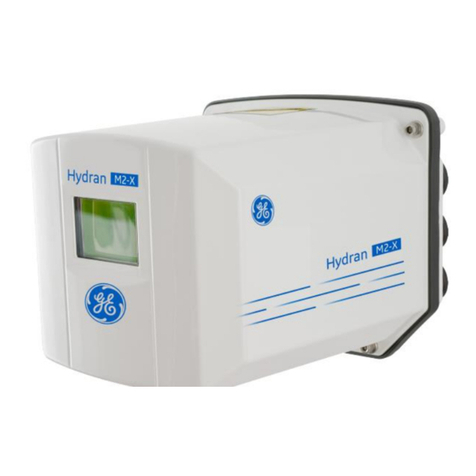
GE
GE Hydran M2-X instruction manual
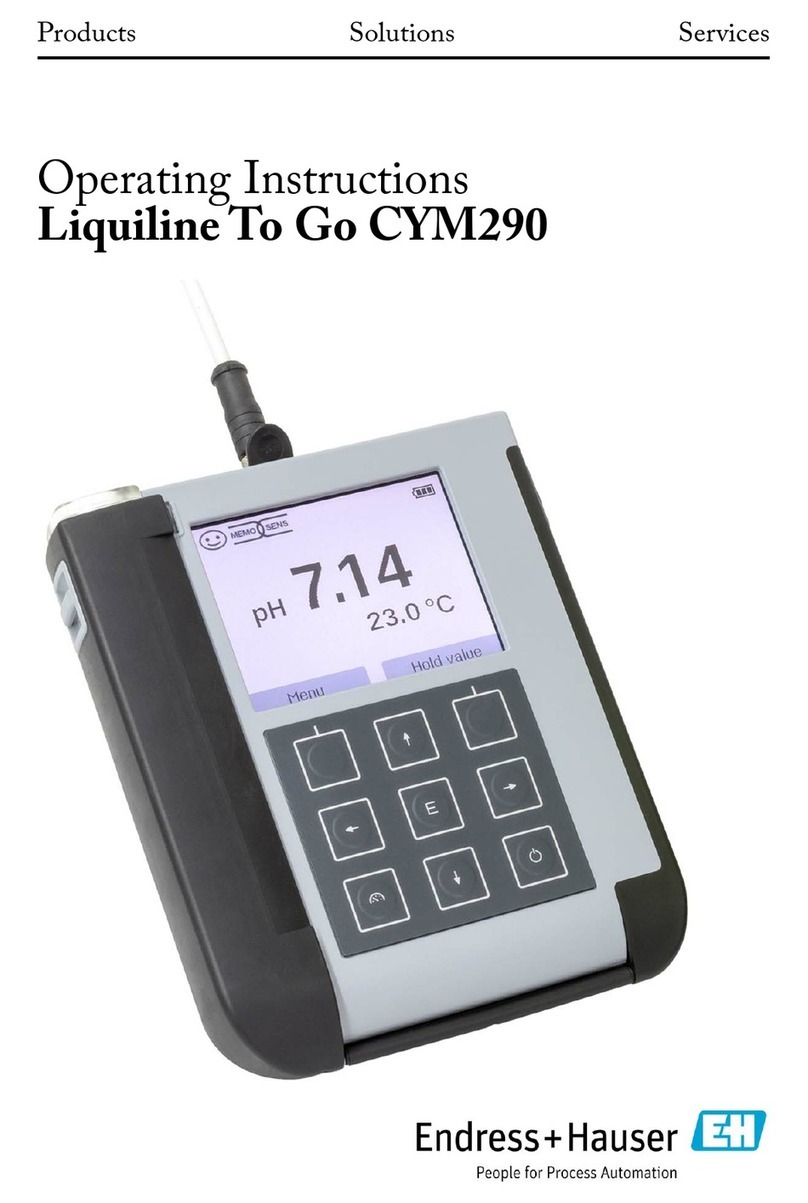
Endress+Hauser
Endress+Hauser Liquiline To Go CYM290 operating instructions
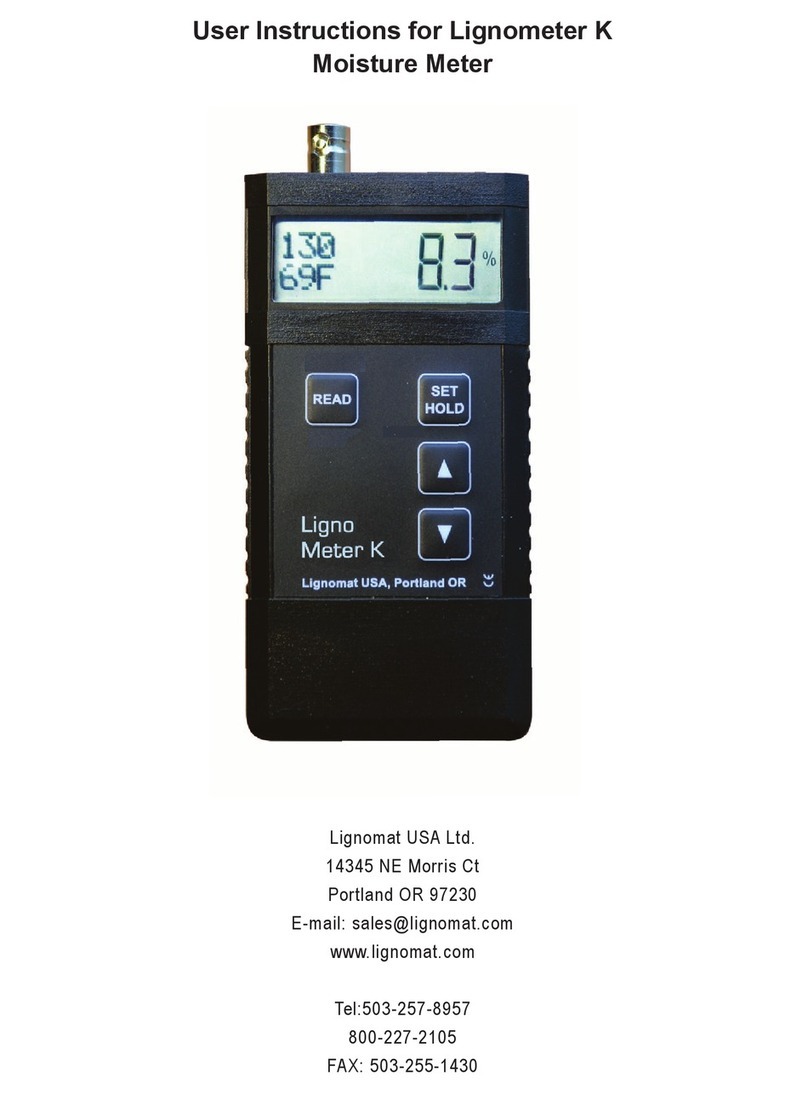
Lignomat
Lignomat Lignometer K User instructions

Elster
Elster EA_Gatekeeper instructions
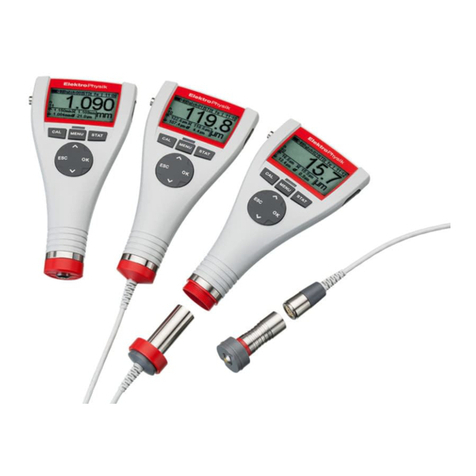
ElektroPhysik
ElektroPhysik MiniTest 725 Technical manual and operating instructions
